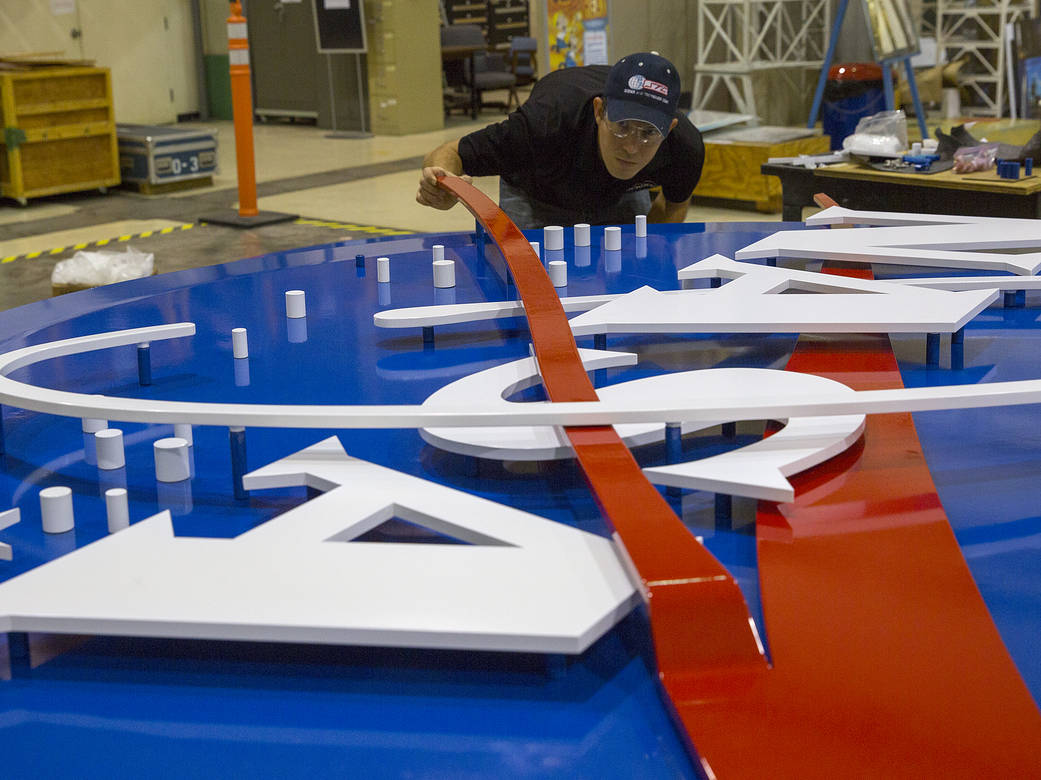Image credit: NASA/David C. Bowman
In this photo, technician Christopher Rex puts final touches on an 8-foot diameter NASA logo fabricated at NASA’s Langley Research Center in Hampton, Virginia. The logo is one of two built for use on the exterior of the Katherine G. Johnson Computational Research Facility, which is under construction and set to open its doors in 2017.
Johnson, who worked at Langley from 1953 until her retirement in 1986, made critical technical contributions such as calculating the trajectory of the 1961 flight of Alan Shepard, the first American in space. She is also credited with verifying the calculations made by early electronic computers of John Glenn’s 1962 launch to orbit and the 1969 Apollo 11 trajectory to the moon.
Fabrication technicians at NASA Langley typically build test articles or wind tunnel models to support research activities, but their skills and tools are versatile.
Thomas Burns, who leads Langley’s Metals Applications Technology Branch, said that the two logos were made entirely on center. Powerful water jets cut the background, letters, stars and other design elements from sheets or blocks of aluminum. Drilling and welding was done in-house. Stainless steel fasteners and mounting brackets were designed and built on center. The paint job is the only element of the project done outside Langley’s gates.
Fabricating NASA logos on this scale requires attention to detail. “It has to look right,” Burns said. “It has to be perfect.”
Sam McDonald
NASA Langley Research Center



























